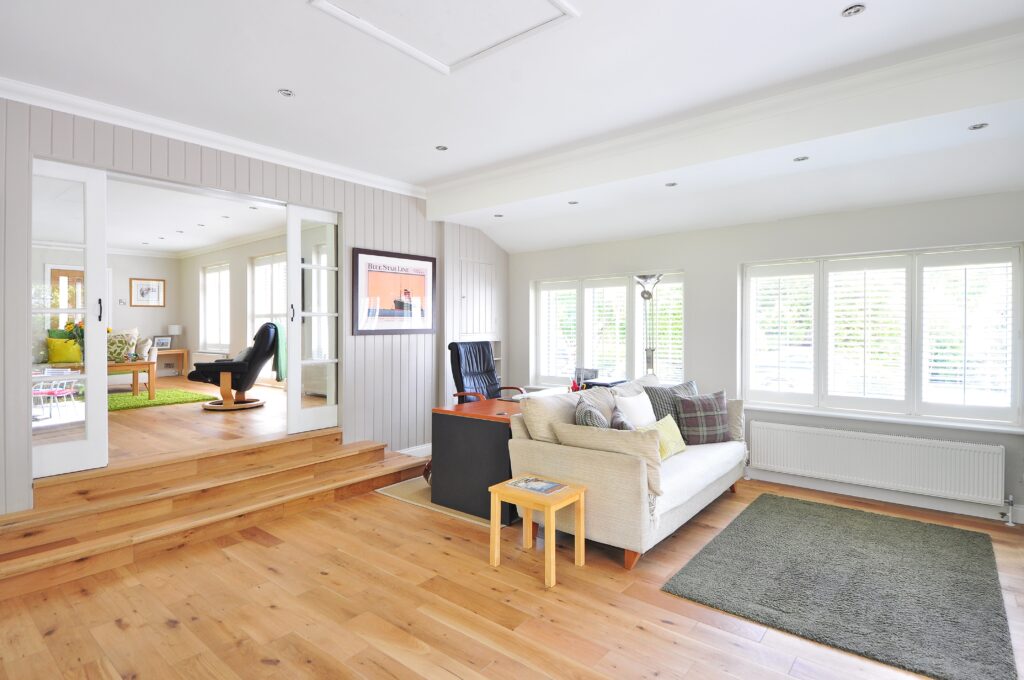Do you plan to install prefinished hardwood floors in your house or place of business? Many property owners like hardwood floors because they are not only aesthetically beautiful but also long-lasting and simple to maintain.
But, if you’re new to DIY projects or have little prior experience laying floors, installing hardwood floors can seem like a difficult process. From preparing your subfloor to putting down the last plank, we’ll walk you through each step of the installation procedure. We’ll also provide you with thorough instructions and pointers to assist you to stay clear of frequent errors and produce a finish that looks polished.
Our guide will give you the information and assurance you need to complete the project properly, whether you’re installing prefinished hardwood floors in one room or throughout your entire home. So gather your equipment, and let’s begin!
Step 1: Measure the Room
Measuring the space is the next step in the installation of prefinished hardwood floors. To get the room’s square footage, measure the room’s length and width in feet and multiply the two figures together. Because some boards might need to be cut to fit around corners or other barriers in the room, it’s usually a good idea to add an extra 10% to the square footage for waste. This is to ensure that you have enough flooring to finish the job.
Step 2: Choose the Right Flooring
Prefinished hardwood floors should be chosen with the room’s style and color palette in mind. The flooring should enhance the room’s overall aesthetic appeal and blend in with the current décor. To make sure the hardwood floors’ alternatives match the existing décor, take samples and compare them. Also, it’s crucial to pick a flooring material that will hold up well to heavy usage and is appropriate for the room’s use.
Step 3: Acclimate the Flooring
Before installation, give the prefinished hardwood floors at least 48 hours to acclimate to the space. This is required so that the wood can respond to the humidity and temperature of the space. Leave the prefinished hardwood flooring boxes unopened and place them in the room where they will be installed. This will lessen the possibility of warping or other problems after installation by allowing the wood to gradually adapt to the surroundings of the room.
Step 4: Prepare the Subfloor
Preparing the subfloor is the first stage in installing prefinished hardwood floors. Before installation, the subfloor needs to be clean, dry, and level. To avoid causing installation issues, start by vacuuming the subfloor to get rid of any dirt or debris. Because moisture might cause the wood to bend or encourage the growth of mold, make sure the flooring is completely dry. Look for any subfloor irregularities and level off any bumps or dips with a leveling compound. Make sure the subfloor is level and prepared for the installation of the hardwood floors by using a straightedge.
Step 5: Install Underlayment Insulation
Using an underlayment insulation before laying down your hardwood flooring will help to improve sound insulation and stop moisture from penetrating through the subfloor. Underlayment insulation comes in a variety of forms, including foam, cork, and rubber.
Roll out a layer of the material over the subfloor to begin installing the underlayment insulation. Using a utility knife, trim the insulation to the proper size, leaving a 1/4-inch gap all the way around the room’s perimeter for expansion. Finally, use moisture-resistant tape to seal the insulation’s seams.
Step 6: Install the Flooring
Laying the flooring is the next stage in installing prefinished hardwood floors. Start on the left side of the room’s longest wall and make your way to the right. To allow for expansion, leave a gap of 1/2 inch between the flooring and the walls. Working in rows from left to right, fasten the boards with a pneumatic flooring nailer. Cut the last board to fit the space when you reach the end of a row, then start a new row. Work in this way until the prefinished hardwood flooring has been installed throughout the entire space.
Step 7: Finish the Job
After installing the prefinished hardwood floors, use a nail punch to drive any sticking nails beneath the surface of the wood. Use wood filler to close up any nail holes or spaces between boards. There is no need to sand or add any additional finishes because the prefinished hardwood flooring already has a finish on it. Following the manufacturer’s recommendations, permit the wood filler to completely dry before using fine-grit sandpaper to smooth it out. Use a vacuum to get rid of any dust or debris on the floor, and then a tack cloth to get rid of any leftover dust.
Step 8: Maintain the Floors
Prefinished hardwood flooring requires little maintenance. Regularly sweep or vacuum the floor to get rid of any dirt or trash. A wet mop should not be used since too much moisture can harm the wood. Use a damp mop and a mild cleanser made especially for hardwood floors as an alternative. To catch dirt and avoid scratches, placemats or area rugs at entrances. Regularly trim your pet’s nails to stop them from scratching the floor. To avoid dents and scratches, place furniture pads under the legs of chairs and tables. Prefinished hardwood floors may add beauty and value to your home or place of business for many years with the right maintenance.
Conclusion
Adding prefinished hardwood flooring to your home can be a wise investment, creating a lovely and long-lasting flooring alternative that matches your current decor with a few easy steps. For results that last, make sure you correctly prepare the subfloor, measure the space, select the appropriate flooring, break it in, install it, finish the job, and maintain the floors. You can profit from prefinished hardwood floors for many years by following these instructions.
